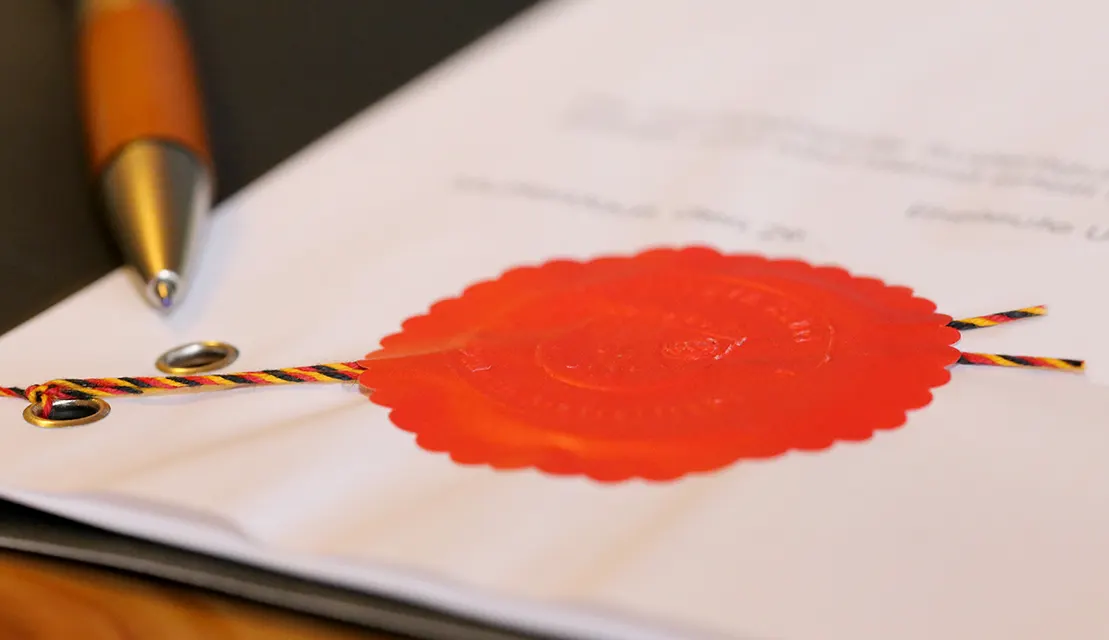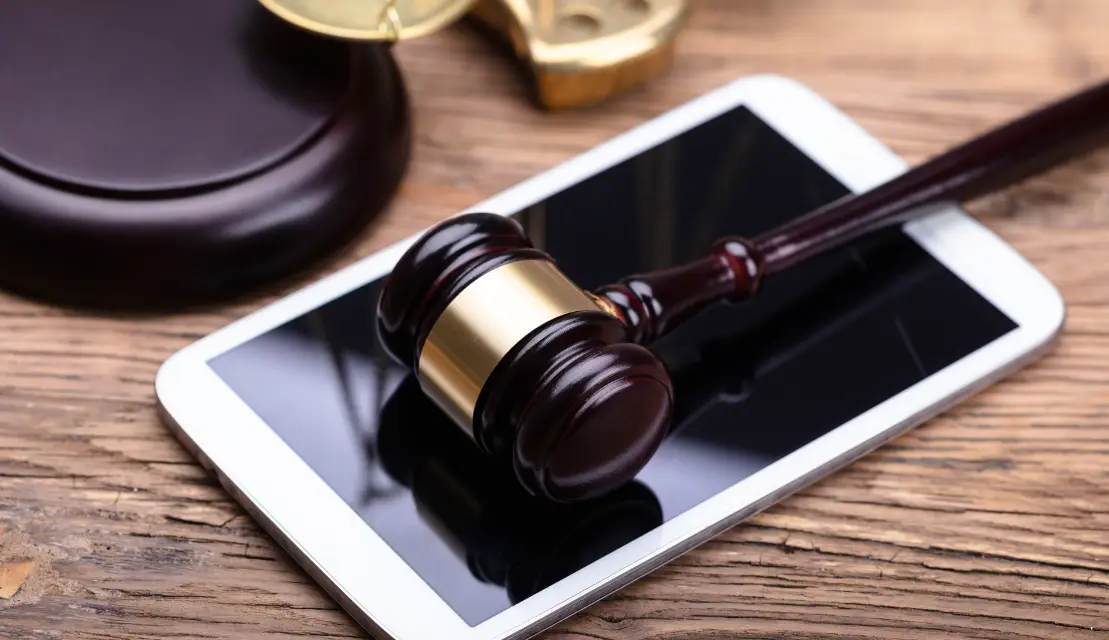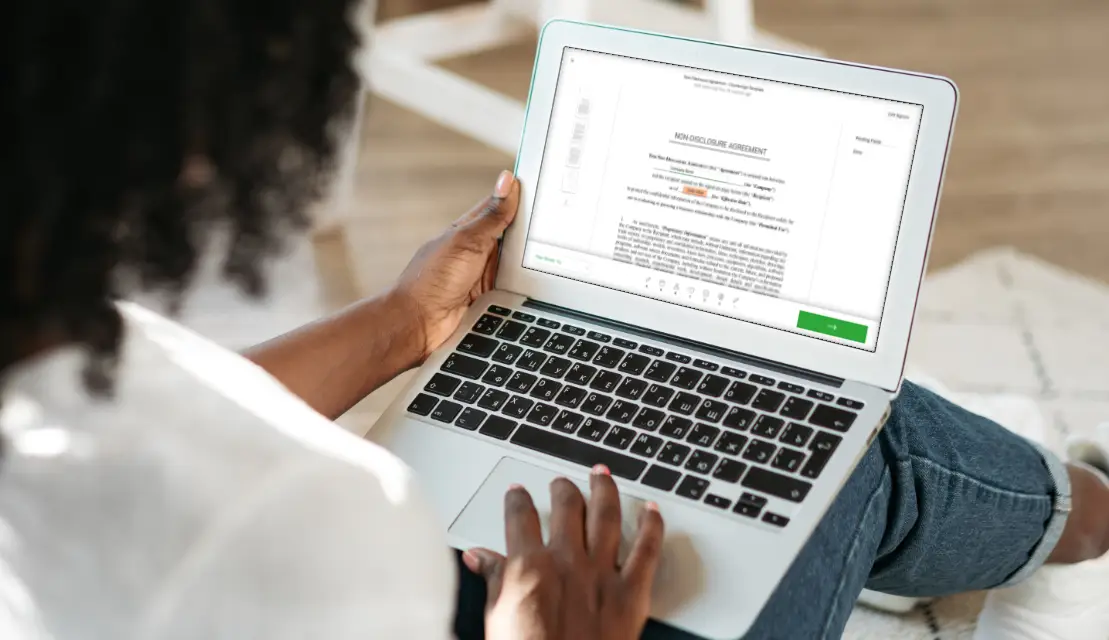You’ve likely heard the word “countersign” before, especially when connected to signing documents. This short word actually has an interesting and complex history. Let’s look at the use and the definition of countersign, from its first mention to today.
Countersign, the noun
First, “countersign” can be used as both a noun and a verb. According to the Oxford English Dictionary, it refers to a signature used to authenticate an official document:
“[Countersign is] a special sign or mark put on something for the purpose of authentication, identification, or reference, …”
The noun countersign first appeared in print in 1591, when it was used in the British military book the Arte of Warre, written by William Garrard and Roger Hitchock. That book referred to “countersignes and markes” required to verify military documents.
Countersign’s history as a verb
“Countersign” is also a verb:
“[To countersign means] to sign a document opposite to, alongside of, or in addition to, another signature…for authentication or confirmation.”
Oxford English Dictionary.
The use of countersign as a verb became more common in the English language in the late 17th and 18th centuries—likely because the British empire was growing more extensive, and more official documents were needed to keep its worldwide bureaucracy running. At the same time, literacy rates were increasing. The introduction of the printing press meant that more English-speaking people could read, write, and use correspondence and official documents to keep track of their own legal and financial affairs.
One English dictionary, published in 1696, defined “countersign” as “to sign a Patent or Order of a Superior, in quality of a Secretary, to render it more Authentic.”
As early as the 17th century, a countersignature represented authority and verification. It was the start when countersignatures were used to keep track of who had seen documents, who was involved with the business they represented, and who had received financial orders, political papers, or other official contracts.
As the word was used more frequently, it gradually came to be used in a broader sense: “to confirm, sanction, or ratify.” In 1840, for example, the famous essayist Thomas De Quincey wrote, “What [was] founded upon a review of two nations and two literatures—we may now countersign by an experience of eight or nine.” In De Quincey’s sentence, “countersign” simply meant to confirm or support.
Get signatures and countersignatures with Countersign.com –
your online e-signature partner.
Get Started
How countersign is used now
Today, the word countersign is often used in reference to making official signatures on documents. In general, it’s understood to mean adding a second signature onto a document. For example, passport applications for varied countries, such as Britain, require a countersignature to help confirm the identity of the individual applying.
In business, countersignatures are often used to verify transactions where a second signature is needed to verify the authority.
Countersign.com
One of the most common uses of the countersignature is in situations requiring a notary. A notary acts as an official, impartial witness to the signing of important documents, especially those related to law or finance. Documents such as real estate deeds, wills, and affidavits are required to be notarized.
According to the National Notary Association, the position of a notary can be traced back to Ancient Rome. While the word countersign is a more recent invention, it alludes to a long history of using second signatures to verify important decisions.
How do countersignatures relate to today’s electronic signatures?
Whether in ancient Roman times or the present, it has always been important for signatures to be accurate and verifiable. Throughout history, the use of countersignatures ultimately served to make transactions more efficient and to prevent fraud.
Today, electronic signatures accomplish the same goal: making transactions smooth and secure. Electronic signatures come with enhanced security measures compared to traditional signatures—just like countersignatures, they help ward off instances of fraud and make sure that important documents stay protected.
So the next time you encounter a document that needs to be countersigned, you’ll be participating in a centuries-long tradition of using more than one signature on a document to verify it. Countersignatures originated as methods to keep business and politics moving more efficiently. Today, e-signature solutions are widely used in business and politics to cut down on excessive labor and costs.
Interested in learning more about how electronic signatures can keep documents safe while streamlining the signature process? Check out Countersign to learn more about this online e-signature solution, with a name inspired by the history of this interesting word.
Give Countersign a try on us.
First 8 docs are free. Get 3 more docs free monthly.
Get started





